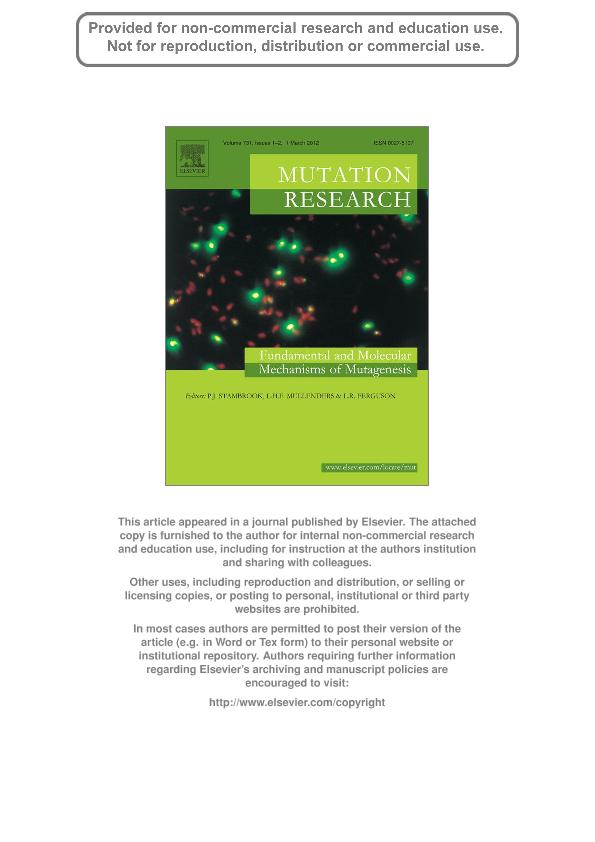Artículo
Bleomycin induces delayed instability of interstitial telomeric sequences in Chinese hamster ovary cells
Fecha de publicación:
03/2012
Editorial:
Elsevier Science
Revista:
Mutation Research-fundamental And Molecular Mechanisms Of Mutagenesis
ISSN:
0027-5107
Idioma:
Inglés
Tipo de recurso:
Artículo publicado
Clasificación temática:
Resumen
We analyzed the behavior of interstitial telomeric sequences (ITSs) in the progeny of Chinese Hamster Ovary (CHO) cells exposed to the radiomimetic compound bleomycin (BLM) in order to determine if ITSs play some role in the long-term clastogenic effect of this antibiotic. To this end, CHO cells were treated with a single concentration of BLM (2.5 μg/ml), and the frequency of unstable chromosomal aberrations was determined at several times after treatment (18. h, and 6, 15 and 34/36 days) by using PNA-FISH with a pan-telomeric probe [(TTAGGG). n repeats]. Cytogenetic analysis revealed a higher frequency of aberrations at 18. h and 6 days after treatment in BLM-exposed cultures vs. untreated cultures, although the yield of BLM-induced aberrations decreased on average five times 6 days after treatment compared with the one induced 18. h after treatment. Moreover, no significant differences in the frequency of aberrations were observed between untreated and BLM-exposed cells at 15 or 34/36 days after treatment. These data indicate that, in terms of unstable aberrations, the in vitro clastogenic effect of BLM on CHO cells persists for at least 6 days but less than 15 days after exposure. In addition, we found that BLM induces ITSs instability, cytogenetically detectable as acentric fragments (18. h after treatment) or additional (new) FISH signals (6 days after treatment). We propose that the delayed effect of BLM on ITSs mainly results from breakage of heterochromatic ITSs blocks and further insertion of these sequences at the sites of monochromatid breaks occurring at G2 phase of the cell cycle, since most of the additional FISH signals were present as single dots and located at interstitial sites of the involved chromosomes. © 2011 Elsevier B.V.
Archivos asociados
Licencia
Identificadores
Colecciones
Articulos(IMBICE)
Articulos de INST.MULTIDISCIPL.DE BIOLOGIA CELULAR (I)
Articulos de INST.MULTIDISCIPL.DE BIOLOGIA CELULAR (I)
Citación
Vidal Bravo, Malena; Bianchi, Maria Martha; Bolzan, Alejandro Daniel; Bleomycin induces delayed instability of interstitial telomeric sequences in Chinese hamster ovary cells; Elsevier Science; Mutation Research-fundamental And Molecular Mechanisms Of Mutagenesis; 731; 1-2; 3-2012; 133-139
Compartir
Altmétricas




